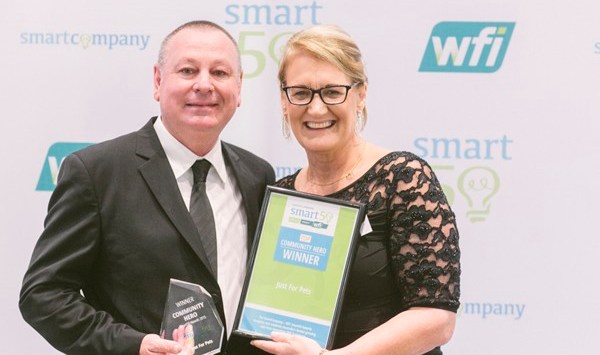

Retail is a tough business, but luckily there is a wealth of knowledge to be gained from the retailers and service providers who made it into this year’s Smart50 Awards.
From pet care retailers to chocolate makers, these million-dollar businesses have a number of tricks up their sleeve.
Here are four lessons to be learnt from some of Australia’s fastest-growing small and medium size businesses.
1. Sell your products for the right price
Raw chocolate company Pana Chocolate swooped in at number 13 on this year’s Smart50 thanks to an impressive revenue of $5.85 million despite only being around since 2012.
While the chocolate maker has two retail shopfronts in Melbourne and Sydney and its products are going gangbusters in Europe, the business may not be growing as quickly if founder Pana Barbounis hadn’t settled on the right price for his products.
Barbounis had hesitations about selling his chocolate bars for $6.50 because it was around 30% more expensive than comparable products already on the market.
However, the bet paid off thanks to Pana Chocolate’s attention to quality.
The price point also allowed the business to scale quickly because Barbounis wasn’t underselling his products.
“Believe in yourself and believe in your product,” Barbounis told SmartCompany.
“Experience doesn’t always pave the way for the right way.”
2. Have unparalleled customer service
Broadband solutions co-founder Sam Bashiry started the internet service provider with an initial investment of just $1000.
Today, Broadband Solutions turns over more than $15 million.
So what’s behind Broadband Solutions’ success?
Bashiry told SmartCompany the trick is to consistently demonstrate exceptional customer service.
“We provide 24/7 access to dedicated account managers to all our clients,” Bashiry says.
“Our staff are highly trained in both technical support and customer service and are able to address any concerns or queries directly.
“Our account managers also take a proactive approach in anticipating client needs by periodically making contact with them, asking them about their services and wider business activities and providing them with updates on our product offerings.”
3. Find a gap in the market
Karen Justice bought Just For Pets in 2009, describing the business at the time as “a total lemon” with just 2% of the pet retail market.
“I completed a series of introductory meetings with the industry’s key suppliers, during which each told me I was an idiot for buying the business and they were withdrawing support,” Justice says.
“I drove home and cried all weekend. But I realised I had to learn to think creatively – re-strategise and start from scratch.”
The strategy Justice came up with was to build strong customer support by offering 15-minute health checks for pets.
The point of difference has paid off.
Today, Just For Pets is turning over almost 10 times as much as when Justice bought the business in 2009.
4. Empower your staff
The Noosa Chocolate Factory only launched three years ago but is already turning over more than $3 million.
Co-founder Chris Thomson told SmartCompany he credits the business’s success to empowering staff so that, in turn, customers walk away with a positive experience.
“Staff are given very free reign to ensure that every customer has a great experience in store,” Thomson says.
“We encourage our staff to read customers … [to offer] free product inclusions at staff discretion, free coffee to customers that might seem tired after a long day shopping, and the freedom to invite customers to future in store tastings. Staff often tell our story over a complimentary coffee with our regular customers.”
Staff empowerment has also had another important flow-on effect in terms of staff retention.
So far, around 90% of Noosa Chocolate Factory’s staff have been with the business for 12 months or more – meaning money that would otherwise be spent on training up new employees can be funnelled back into product offerings.


COMMENTS
SmartCompany is committed to hosting lively discussions. Help us keep the conversation useful, interesting and welcoming. We aim to publish comments quickly in the interest of promoting robust conversation, but we’re a small team and we deploy filters to protect against legal risk. Occasionally your comment may be held up while it is being reviewed, but we’re working as fast as we can to keep the conversation rolling.
The SmartCompany comment section is members-only content. Please subscribe to leave a comment.
The SmartCompany comment section is members-only content. Please login to leave a comment.